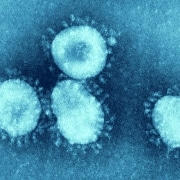COVID-19: A Vaccine Solution?
Not since the Swine Flu epidemic of 2009 has there been this amount of emphasis on vaccines and vaccine development. This new infectious disease threat with no anti-viral, nor vaccine is causing significant concern among healthcare providers, governments and the public. Last-resort measures such as school closings and curfews in place in the United States has only increased focus on a vaccine solution that could provide enough protections to individuals.
Kalorama covers vaccines markets from 2018 to projected 2024 markets in its market research study: https://kaloramainformation.com/product/vaccines-2018-world-market-analysis-key-players-trends-pediatric-and-adult-segments-influenza-cervical-cancer-combinations-hepatitis-pneumococcal-mmr-varicella-poliovirus-hib-others/
A new report will be out in July 2020.
Some diseases have proven extremely difficult to address through vaccines – HIV, for example. However, although much is unknown about COVID-19, it is nonetheless a respiratory disease that belongs to a class of diseases – corona viruses – that is well understood. This provides more confidence
We talked with our vaccine analysts to get their sense of the landscape with novel coronavirus.
Early Efforts and a First Trial Dose
COVID-19 vaccine candidates are now heading into trials. Companies in various stages of development include Gilead, GlaxoSmithKline, Pfizer, Moderna, Medicago and others.
Pfizer chairman and CEO Dr Albert Bourla said: “Many companies, including Pfizer, are working to develop antiviral therapies to help infected patients fight this emerging virus as well as new vaccines…Pfizer is working to advance our own potential antiviral therapies and is engaged with BioNTech on a potential mRNA coronavirus vaccine.”
Cambridge, MA-based Moderna announced first participant dose in a Phase 1 trial for mRNA-1273 against the novel coronavirus. Moderna’s mRNA-1273 is an mRNA vaccine against SARS-CoV-2 encoding for a prefusion stabilized form of the Spike (S) protein. The company’s Phase 1 study is evaluating the safety and immunogenicity of three dose levels of mRNA-1273 (25, 100, 250 μg) administered on a two-dose vaccination schedule, given 28 days apart. A total of 45 healthy adults will be enrolled in the study. Participants will be followed through 12 months after the second vaccination. The primary objective is to evaluate the safety and reactogenicity of a two-dose vaccination schedule of mRNA-1273. The secondary objective is to evaluate the immunogenicity to the SARS-CoV-2 S protein.
This is a major opportunity for vaccine developers, so it is likely that if a developer has a vaccine that could be even partially effective, they will do everything possible to move it thru trials quickly. At the same time, governments are looking for more tools to contain the spread. It’s clear that steps taken to date have not been sufficient. So they are highly motivated to support vaccine development efforts.
Technology
Demand is not the issue, according to Kalorama’s vaccine analysts. The market pull will be there, but in vaccine markets, where customers are generally governments, it comes down to the technology – the products.
Some diseases have proven extremely difficult to address through vaccines – HIV, for example. However, although much is unknown about COVID-19, it is nonetheless a respiratory disease that belongs to a class of diseases – corona viruses – that is well understood. This provides more confidence that it is possible to create a vaccine that would protect some portion of the population.
Since other countries do have significant vaccine development resources – China, India, Japan, etc. – it is certainly possible that a vaccine could be developed overseas before one is developed in the U.S. In fact, I would guess that Chinese vaccine developers began working on this weeks before U.S. vaccine developers.
The Gaurdian reported that about 35 companies and academic institutions are racing to create such a vaccine, at least four of which already have candidates they have been testing in animals.
Stat News reported about an interesting synthetic mRNA solution that is being developed. https://www.statnews.com/2020/03/11/researchers-rush-to-start-moderna-coronavirus-vaccine-trial-without-usual-animal-testing/ that would be “programmed with the goal of getting our inner machinery to produce certain coronavirus-like proteins — the very proteins that the pathogen uses to gain entry into our cells. Researchers at Moderna and the NIH think that once those homemade dummy virus particles are there, the thinking goes, our bodies will learn to recognize and clobber the real thing.”
Production
Of course, developing a vaccine is only part of the problem. Any vaccine would have to be effectively manufactured and distributed. That could create significant roles for many other players.
Most inactivated influenza vaccines are produced by growing influenza viruses in eggs. This requires a staggering amount of them. For the H1N1 flu vaccine, a million eggs are required for 3 million doses, more or less.
Egg-based production process begins with candidate vaccine viruses (CVVs) grown in eggs provided by the CDC or approved partner per current FDA regulatory requirements. These CVVs are then injected into fertilized hen’s eggs and incubated for several days to allow the viruses to replicate. The fluid containing virus is harvested from the eggs.
Cell-based flu vaccine has been developed as an alternative to the egg-based manufacturing process. On August 31, 2016, FDA issued an approval for Seqirus, the sole FDA-approved cell-based flu vaccine manufacturer in the United States, to begin using cell-grown CVVs. Cell culture technology is potentially more flexible than the traditional technology, which relies upon adequate supply of eggs. Recombinant DNA manufacturing is another option. This method does not require an egg-grown vaccine virus and does not use chicken eggs at all in the production process. Instead, manufacturers isolate a certain protein from a flu virus. This proteins are then combined with portions of another virus that grows well in insect cells and allowed to replicate. A protein is harvested from this mix that is used to make the vaccine.
According to a recent article in the Los Angeles times, there are many different vaccine-making platforms, each with its own set of advantages and disadvantages. https://www.latimes.com/science/story/2020-03-12/why-does-it-take-so-long-to-make-a-coronavirus-vaccine “For example, a vaccine based on the virus’ genome can be made quickly, in perhaps a month or two, but it may be harder to manufacture in giant quantities. Another option is to take the virus’ genetic snapshot and put it into a different virus for transport. These vaccines take longer to make — say, six to eight months — but they can be scaled up more readily.”
” almost 33% of readers believe it will take over a year, while slightly more 28% are optimistic there could be a vaccine available within three months.” -Pharmaceutical Technology
An article in Pharmaceutical Technology said that “Readers of Pharmaceutical Technology have been voting on how long they think it will take for a vaccine to be available to patients. With over 164,000 votes cast, the results show than almost 33% of readers believe it will take over a year, while slightly more 28% are optimistic there could be a vaccine available within three months.”
In general, this is a very major opportunity for the vaccine industry to shine. We would expect it to rise to the occasion with at least one, if not several, potential products. Kalorama will of course report on updates in our biennial vaccine market research study.



